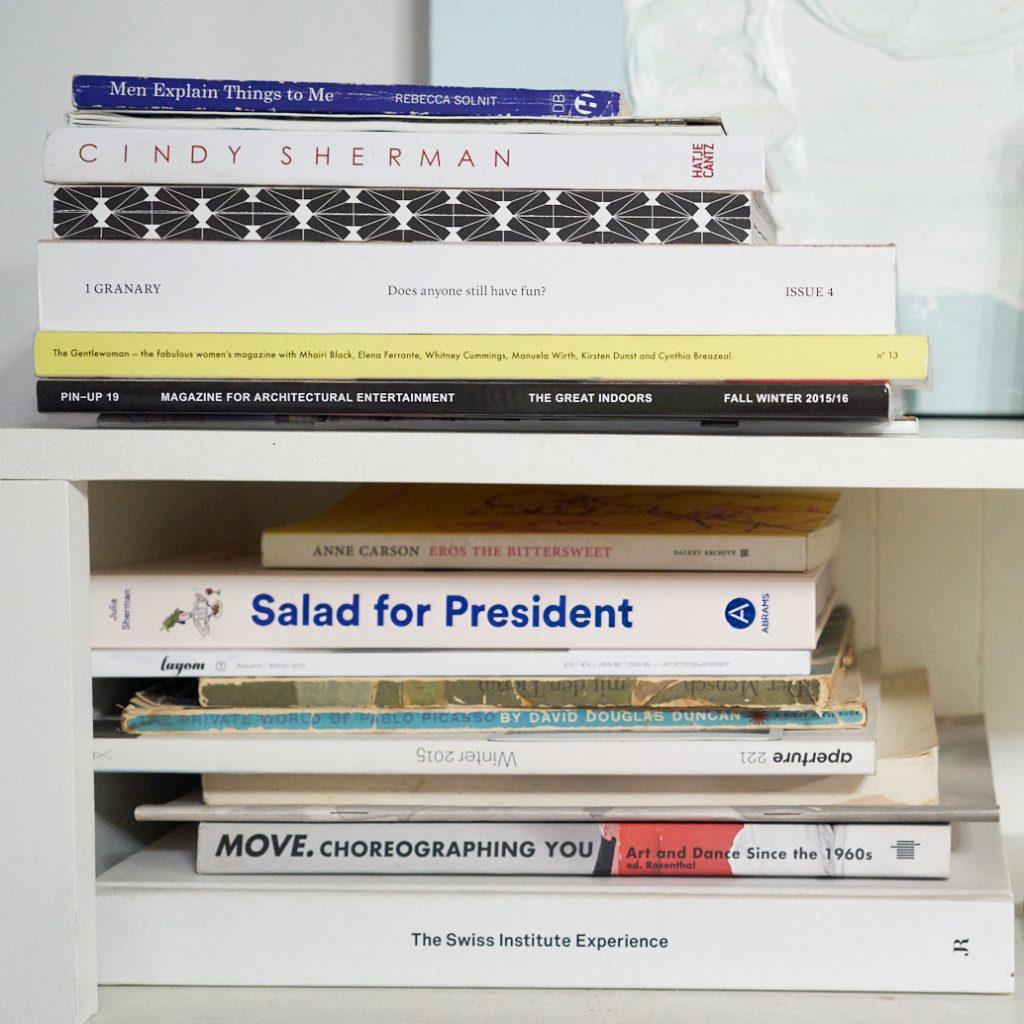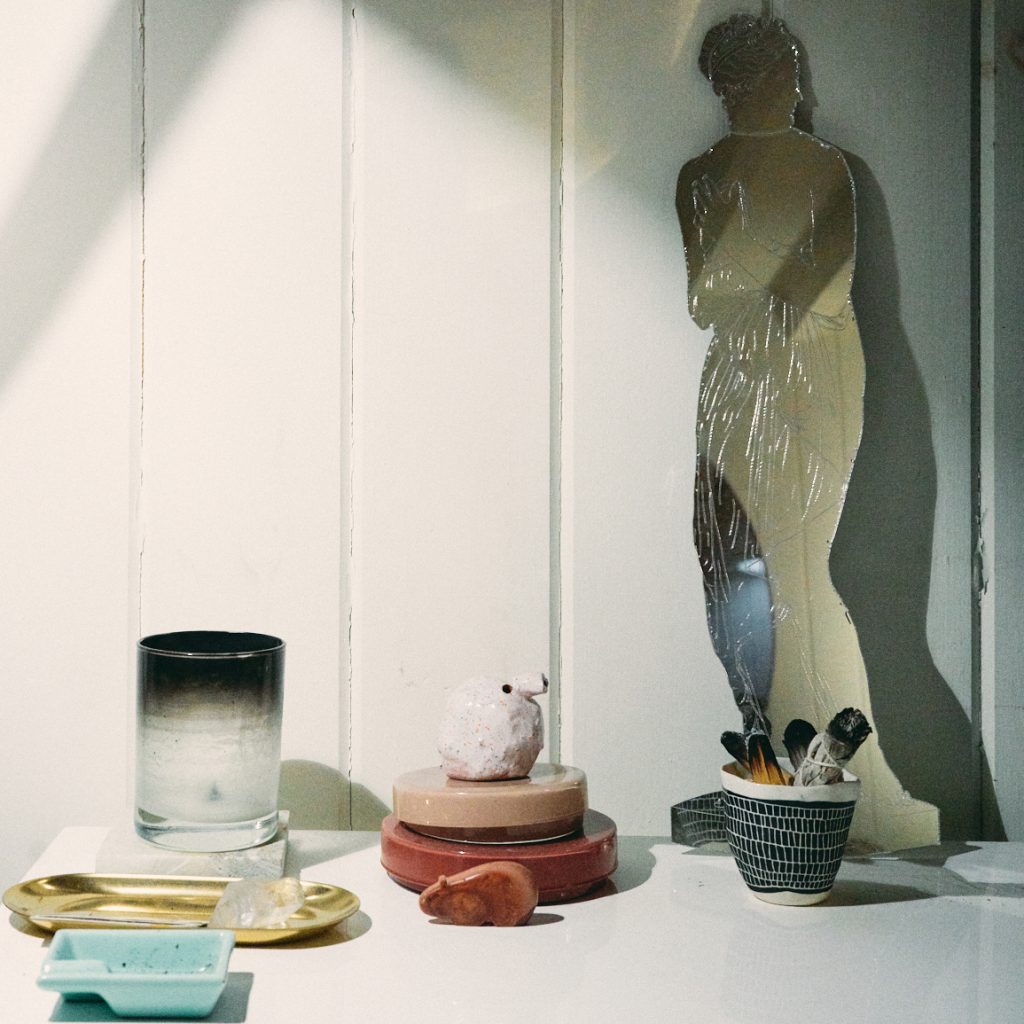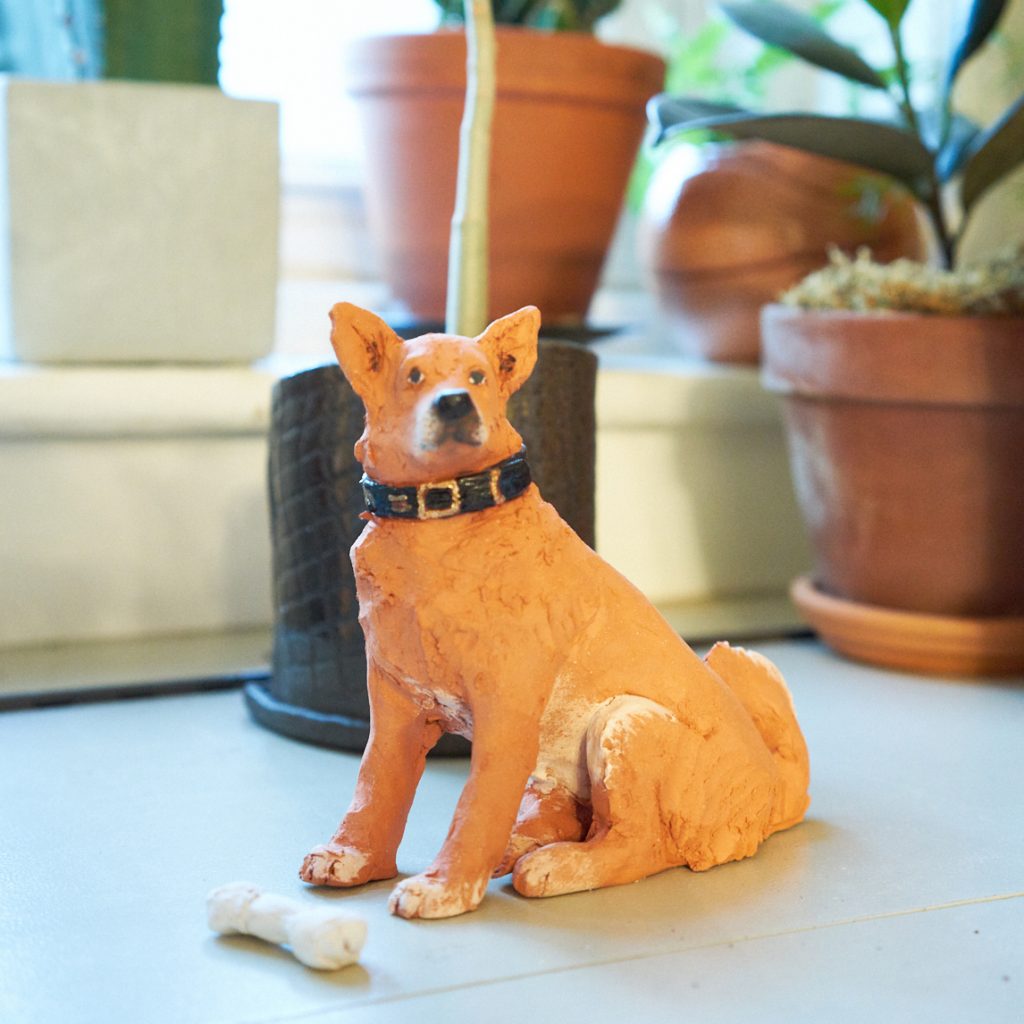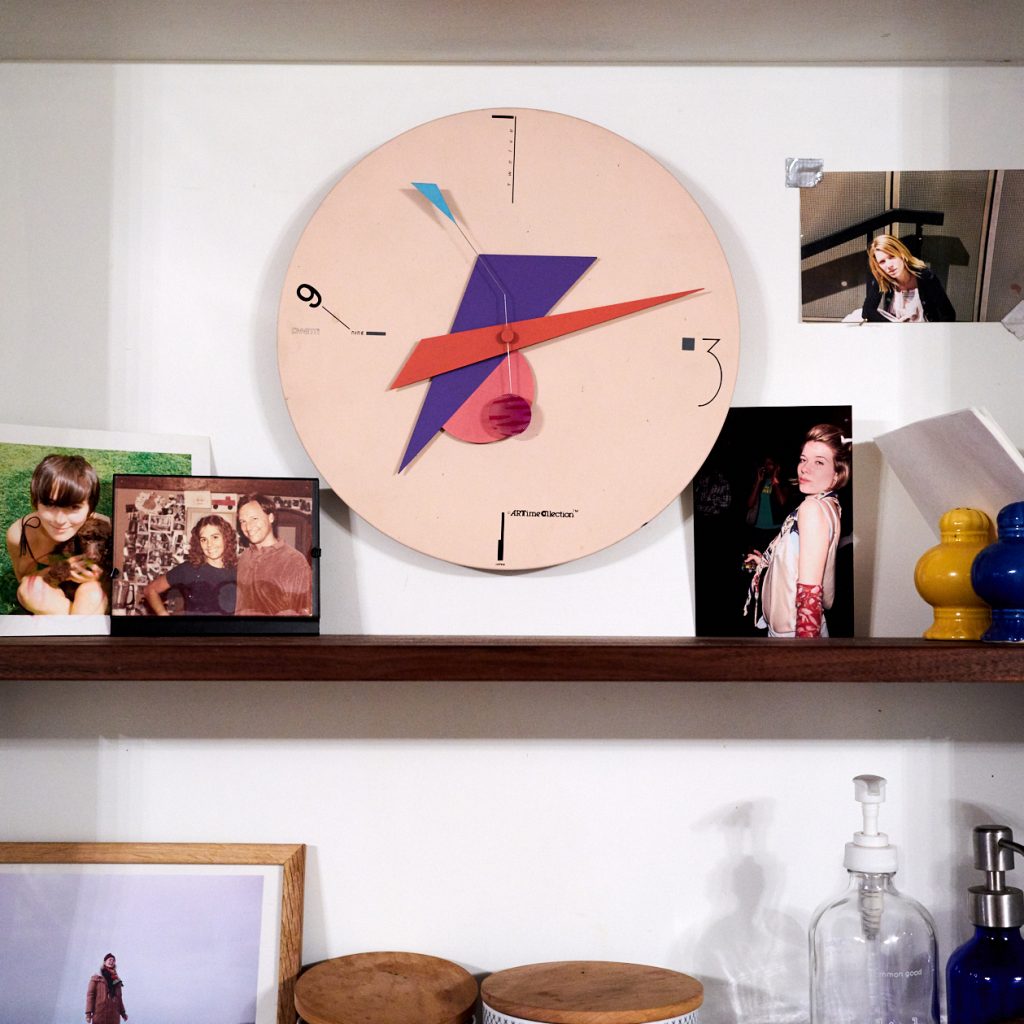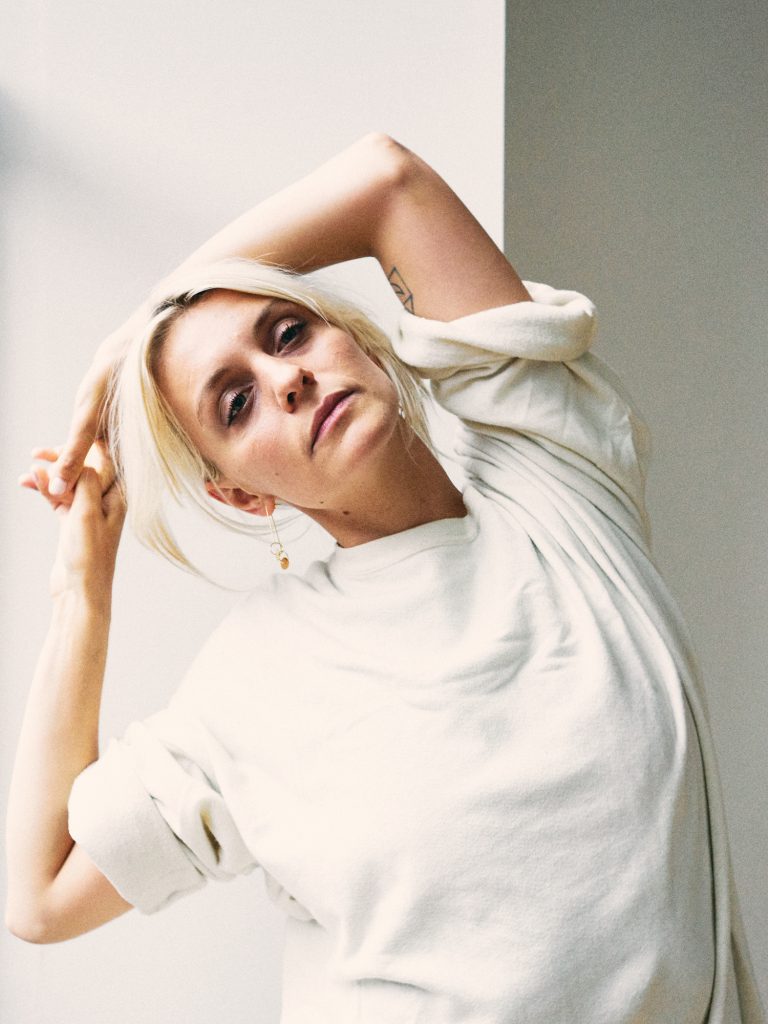
JULIA CROCKETT /
MOVEMENT ARTIST &
TEACHER
Our physical bodies are protective containers of our soul, yet how do we wholesomely attain the full potential of our physicality instead of just consuming it? Through different practices and trials in life, Julia has found her answer in movement art.
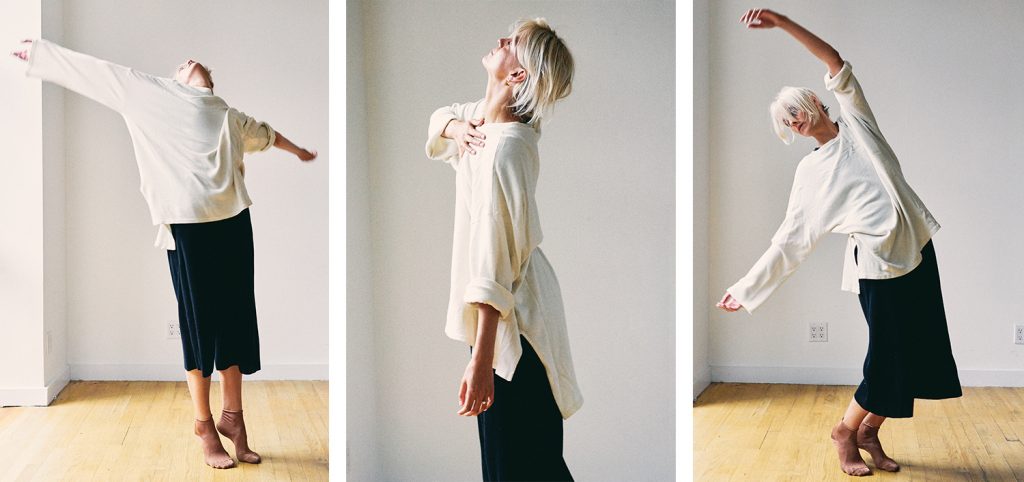

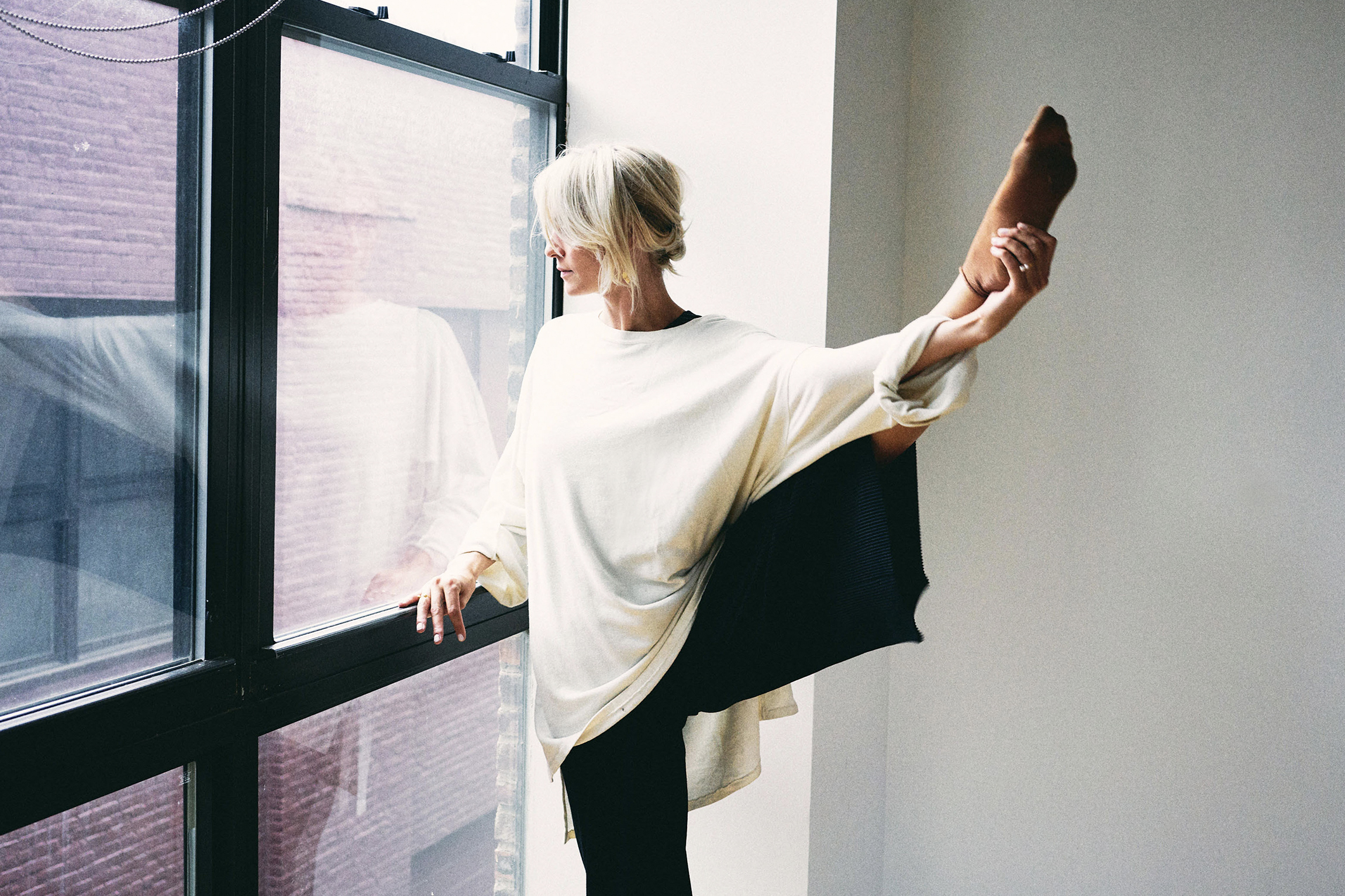
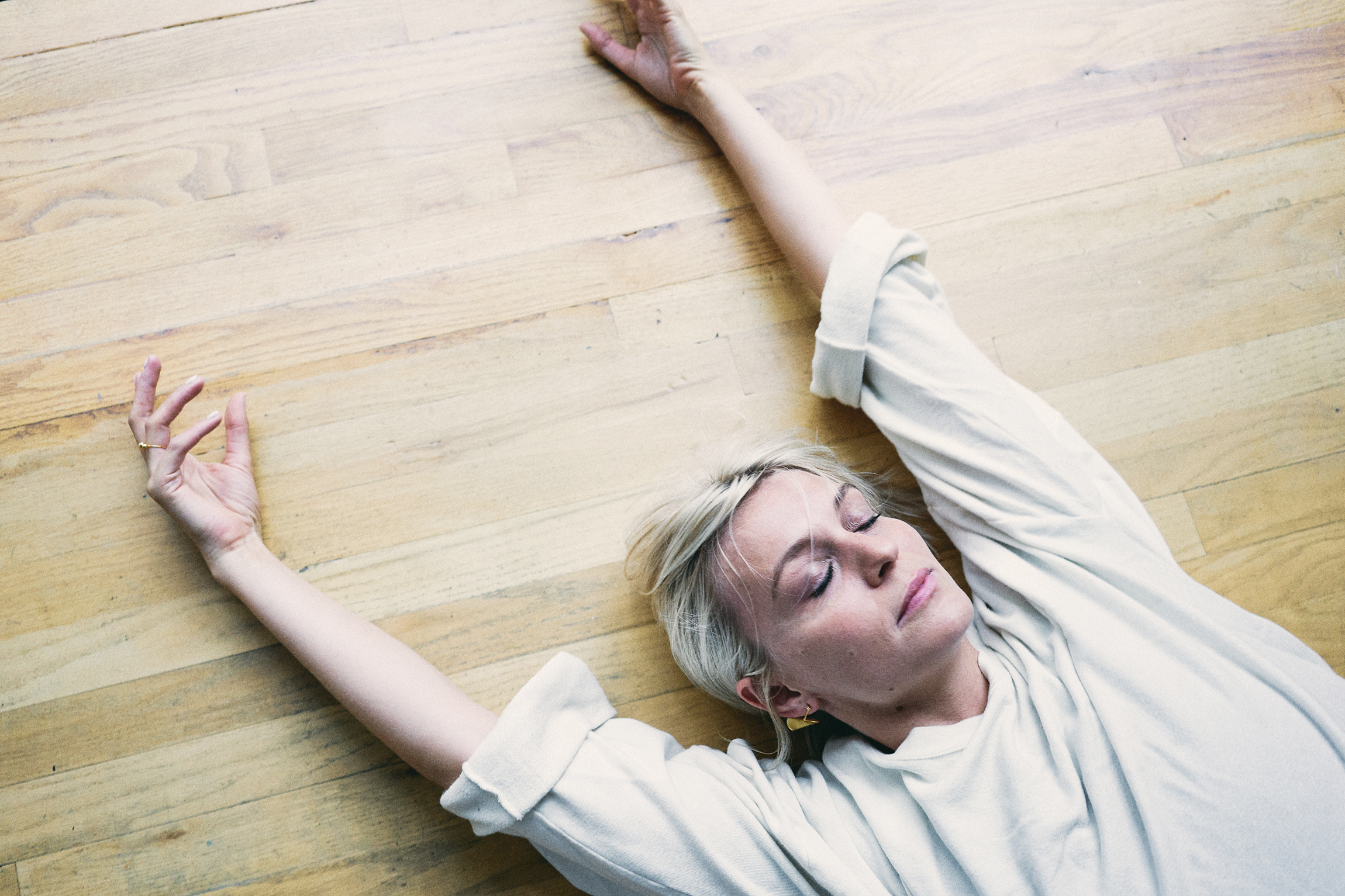
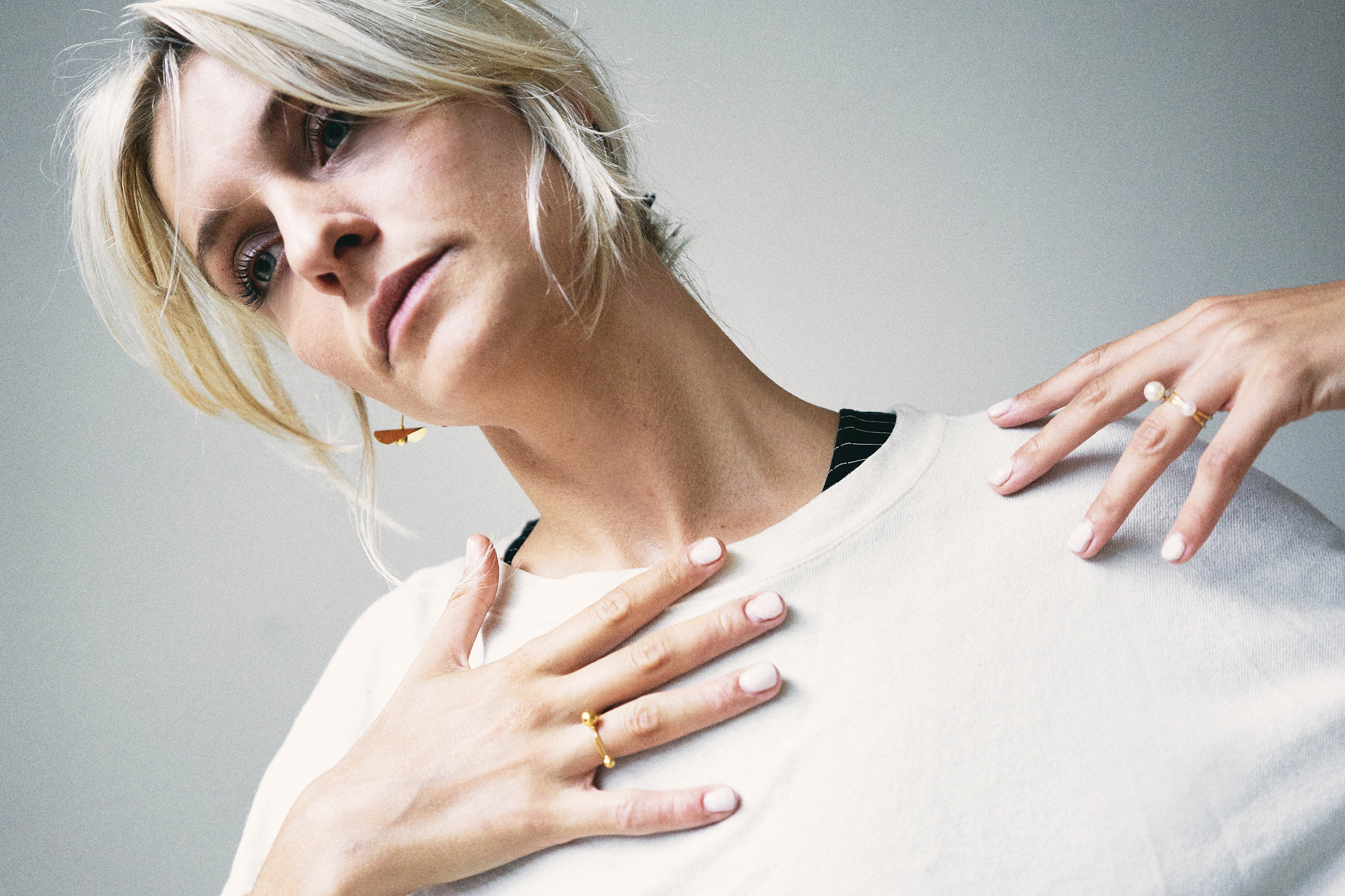
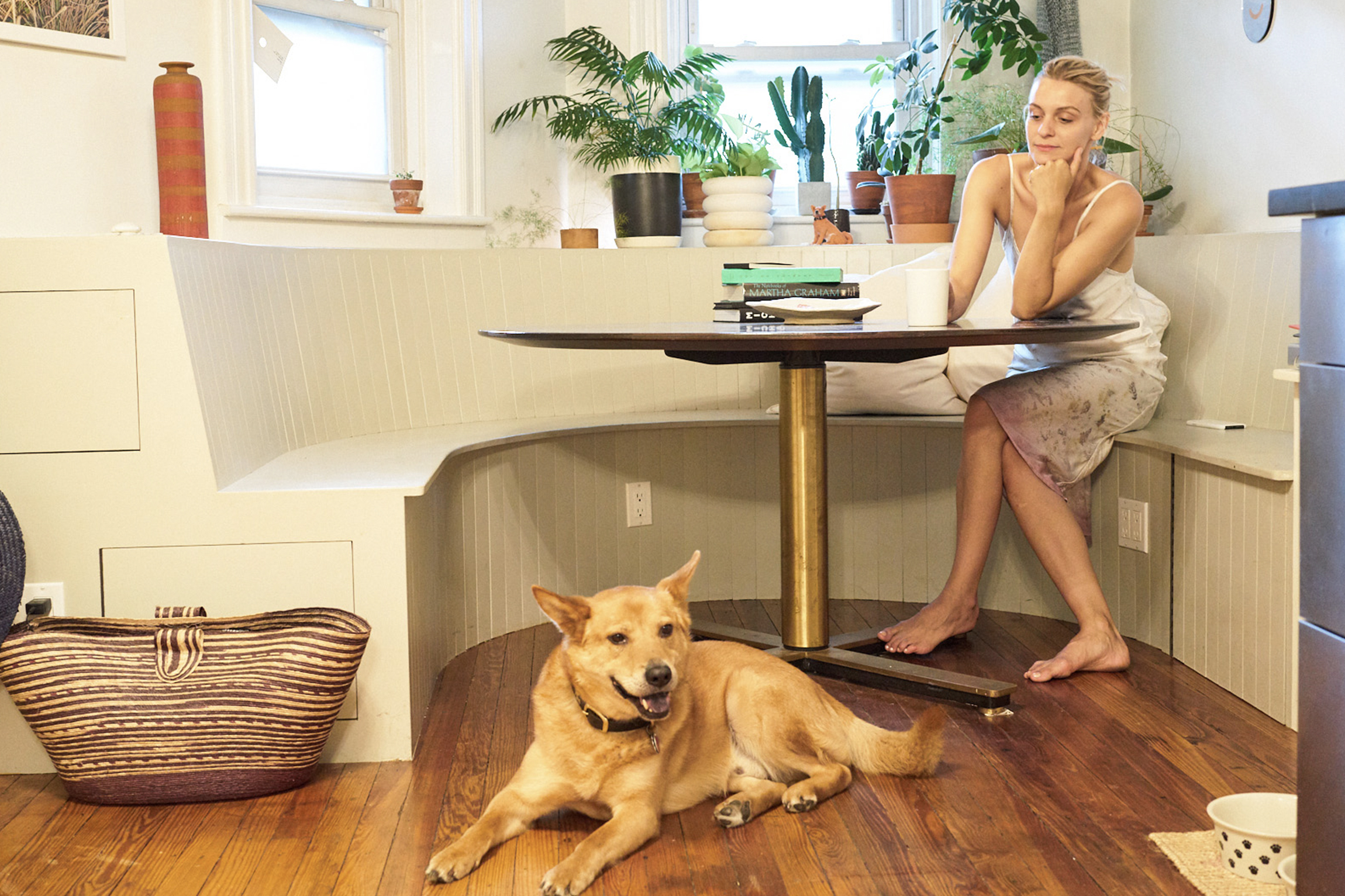
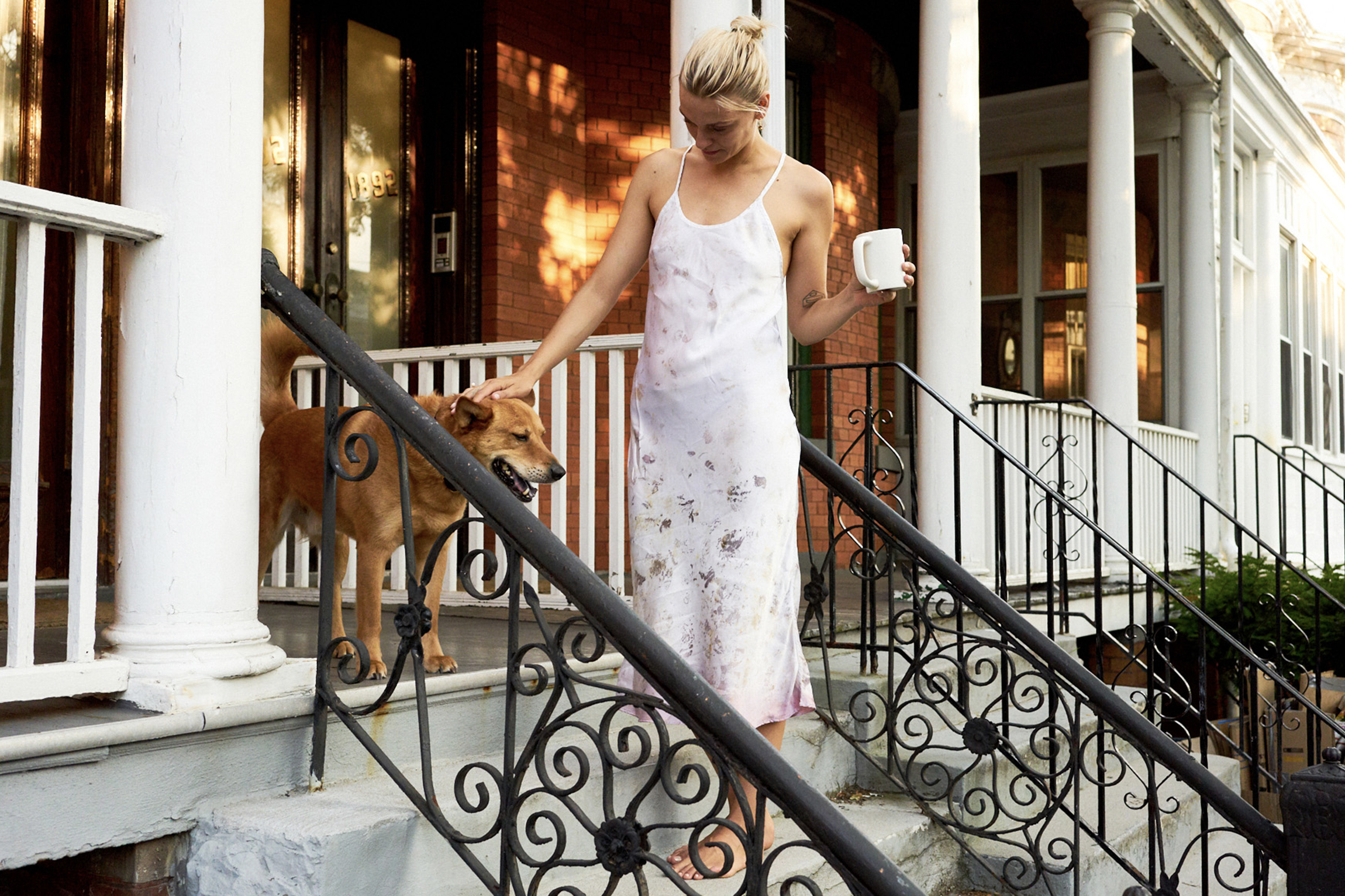
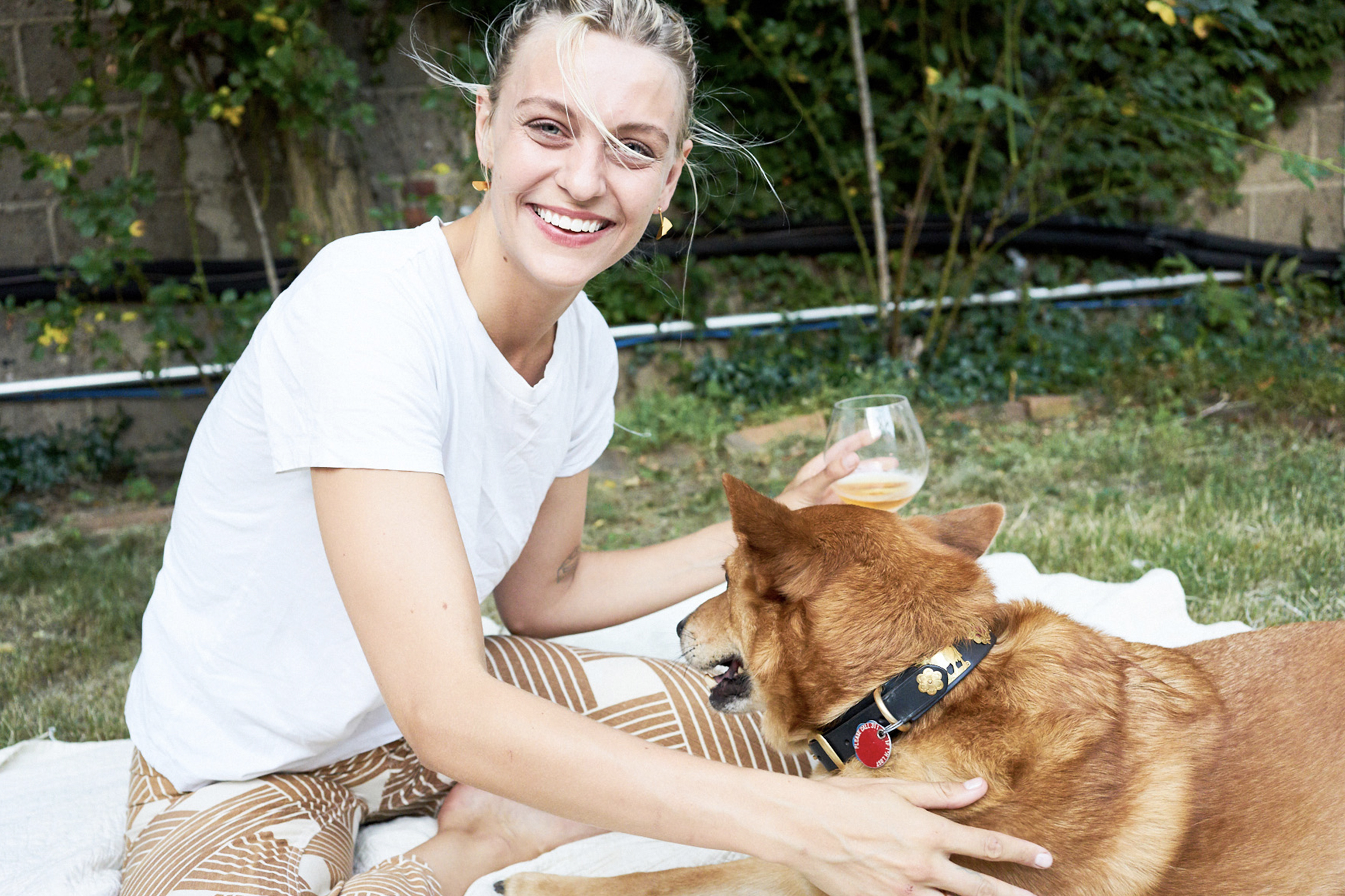
Can you tell us a little more about your upbringing and how you made your move to New York?
I grew up in Telluride, a small ski resort town in Colorado, and was brought up in a very artistic family. My father, who has passed away, was a writer. My family actually moved to Colorado from Oklahoma because he was sick and wanted to live by the river. After the relocation, he started fly fishing while fighting cancer and continued to live for the next 14 years. He used to always talk about how fly fishing saved his life. My mom, on the other hand, lived in a more cosmopolitan part of town, so I’d go to choir there, play cello, and also started going to dance and performing classes. Since I was little, both of my parents have inserted a lot of artistry in my sister and me. My sister is a songwriter and a poet, and a very gifted weaver as well. She even designed a computer program to help create patterns with her loom. Her works are absolutely beautiful.
Growing up in a small town, I always had this thought in the back of my mind that I would go to New York. It just seemed like the center of the universe to me. I always knew that I was going to be a performer of some sorts. At one point, I did think about being a composer, but somehow it was never a question to me of what I was going to do. It was natural to pursue New York because it was like a mecca to me for theatre and performing arts. I went to school in NYU in an independent study program where people can design their own major and mine focused on gender and sexuality theory, feminist theory, and performance theory. In my studies, I looked at the history of development in female characters, whether it was what a female character was socially or how they appeared in cinema and plays, to historical female characters, such as the first Queen Elizabeth or Cleopatra, as well as how we develop our ideas of a female character and what kind of women we should be. At the same time, I was also studying in an acting conservatory for a professional acting program of the Meisner technique under Maggie Flanigan. So, I was getting this really cerebral education at NYU about performance and gender identity, whereas Meisner training was this really intense, emotional, two-year training program that was designed to crack you open and help you access the furthest extent of your temperament and who you are. What is interesting about Meisner is that it’s all imagination, while some techniques are built upon personal histories: Meisner is about imagining yourself. I really enjoyed and loved the idea of using fantasy to crack my heart, spirit, and emotionality open. While I was there, I took this movement training program called the Williamson technique (the version I studied was slightly different from its original with developments of my two mentors) and this work has completely changed my whole life. It made so much sense to me because I’d always been so connected to my body growing up, whether through sports or dance but also with this ancient Japanese practice called Jin Shin Jyutsu, which is basically hand and touch healing. Knowing that at a really young age has really put me in touch with the way our body responds to our emotional life.
After four semesters of movement training, my mentor Nate Flower saw the link and potential in me and proposed the idea of training me into a professional teacher for this technique. At the time, though I set myself going towards acting, I still took the offer and started training under him for another two years, shadowing what he did. Later on, I got a job at NYU and the Maggie Flanigan studio teaching this technique, and it really became the platform for my primary artistic practice, which is physical and movement work.
I also continued to be an actor, been on TV, plays, films, and such. However, the knot of my artistic being is tied as a movement artist. To me, it is my spiritual practice and the central focus of my whole life.
It seems like everything made so much sense. You followed the steps exactly how you envisioned yourself to be.
When I just started teaching, I was acting a lot in between times. I had a manager who worked with me for 12 years, and I was booked in lots of work, such as Boardwalk Empire. That was when I also took this acting business class, where I was taught how to dress, talk, and market myself, all about the attire. For me, I am gay, and when I was younger, it was really important to me to dress gay. So, in school, I was taught to fem up my look, put on makeup, blow up my hair, and show my curves. I did them all and left school every day feeling like I was wearing a costume. I started meeting agents anxiously and would go to auditions having a panic attack, but on the other side when I was teaching movement, I felt so free at being myself. It is a movement therapy: very emotional, improvisational, and liberating. While acting makes me feel like I’m pretending to be someone else, movement art is all about finding my authentic self, so I made the decision to leave acting and didn’t return till 4 years later, after I had fully stepped into my own skin.
In the entertainment industry, it is often asked, “What makes you better than everybody else? What makes you special that people would want to cast you?” And back when I was younger, I had thought (or was taught to think) that what it meant was that I had to be the better version of everybody I see on TV. But I have come to understand that it’s simply just being exactly who you are. You are not adding anything but moreover taking things away. Marina Abramović once said that when you are younger, especially for a performance artist, the art is all about having a lot of stuff and having a lot of things and subjects involved. But as artists get older, it is all about taking away as much stuff as possible and being as simple as possible, which is what I think a lot about.
Could you describe yourself as a performance and movement artist? What are your traits and styles?
In terms of the performance aspect of it, I have a performance group called Julia Crockett & Group, and when we perform or choreograph, you could think of the spectrum between the most abstract physical behavior, which is dance, and hyper human behavior. My work is always exploring between both, so there’s always this emotionality that separates it from dance, though it looks like dance. I always want that at the end of a show, people will feel really emotional, having the feeling to cry but not knowing why. It is not sadness; I like to make work that is extremely joyful, with lots of whimsy and play, so humor and sometimes outright silliness are really important to me… the effect of seeing people operating at their limit in the performance, whether they’re screaming, going between crying and laughing and dancing really beautifully… giving the viewers these emotions all at once.
The other aspect of my choreographic work is that I hold these things called The Sunday Sessions, which are open community classes that are two-hour-long improvisations. It was spread among my friends where my company members and artist friends would join. A lot of people I know with artistic sensibility who want to move often felt dance was not available to them because dance has this culture of professional training, but dance to me is such an instinctual human behavior that is so natural and emotional. Therefore, I really wanted to create a space where dance doesn’t belong to anybody. Even though I have extreme admiration for well-trained dancers, I think of it as a different thing. The two-hour improvisation has a lot of the same quality of dance, play, human behavior, and human connection, which are huge parts of movement: seeing and connecting with people. The Sunday Sessions have really become kind of like Sunday church to me. It has almost been six years of doing it although we plan it irregularly since I don’t have a routine schedule of work.
How and when did you decide on forming your own dance group?
Julia Crockett & Group formally began in 2011, and before that, I had created a company called FoxStole in 2008, which was kind of the former version of Julia Crockett & Group. It was when I was done training professionally in movement and started teaching that I felt the need to figure out how to be a director on my own. Back then, I had a lot of friends who just finished the same acting program as me but didn’t have a platform to practice all the amazing things we had learned, so we all got together. I still remember our very first show. There was no internal resistance, no judgement; it was so straightforward because there was no standard established or expectation. For me, creating and choreographing something now has a lot of conflict and could feel like you’ve been to war with yourself sometimes.
What spirit or message do you wish to deliver through your work?
There are lots, but I think the biggest one would be freedom and joy. I love to see people in their most uninhibited form, and I want people to see my work feeling inspired by the joy. When the environment here is kind of nightmarish politically, a lot of my artistic peers have experienced this galvanizing and reawakening of art with efficacy, something that can create change. I would have a moment with myself where I’d ask, “What can I do?” And I think through all of my work, I’ve always tried to teach about connection across gender, races, and ages as well as also keeping a message of joy out there, because it can be so hard when things seem so dismal. I think happiness and joy are experienced from connecting with other people, so to provide people a space for connection is a tiny little way to heal the world.
With all these practices and lessons learned through your long history in movement and performing arts, you’ve come to form your own philosophy in your work. Have you already found a good balance in work and in life?
If I were to rewind time, and talk to my younger self and show her how I am now, I think I would be pretty impressed with the work that I’ve done on myself because so much of my teaching is about being free and authentic: giving yourself permission and being aware of what surrounds you. I would be impressed that I’ve followed my belief and designed my life to support all these values. But if you ask me now, I just feel like there is so much more that I can do! The scale or the matrix of the kind of person and artist I want to be is constantly evolving.
Through all the teachings that I’ve done, the ability to be in conversation with myself has become more nuanced and advanced. Sometimes, the voice within yourself is screaming for attention, and for some people, it is so hard to hear that. I feel that with my teaching, the inner voice just doesn’t need to scream anymore. It has become much smaller in volume and nuanced. In that regard, and specifically the relationship with my body, the ability to sense my inner voice and self-correct is pretty advanced and balanced.
You mentioned earlier that you once thought of being a composer. Does that mean you are a musical person as well? Does it reflect your movement work?
Yes, definitely. With any sort of production, whether it’s a class or jam that I lead or a dance piece that I’m making, it does have a shape to it, and there’s definitely a music sensibility in the arc of something. My ear, my understanding of the history of music, or my ability to hear the emotionality in music has really helped me succeed in what I do. I think for any sort of dance, to really be able to listen to music, rhythm, and let the body respond is really important.
It is very unfortunate that society is so restricted in our impulsive movements, whether it’s the media or from parenting and socializing, going through puberty where people pick you apart, or sitting at a desk all day, feeling the need to be bustier or skinnier. Everything we do is limiting and containing our physicality, rather than trusting our impulses. When you look at kids, they would dance like no one’s ever done it, and it’s really incredible.
What is a typical workday like for you?
Well, I don’t really have a typical workday, but I can share what a typical teaching week is like. During school semesters, I would run between different studios and schools in the city and teach 2-3 classes. Last fall, I also got to teach at Rikers Island Correctional Facility, which is a maximum-security prison. I taught at the Parsons the School of Design, helping designers conceive themselves. It is almost impossible to describe my workday. Sometimes I would teach all day, and sometimes I would be on set, and sometimes if I’m working on a production of a piece, I’d be running between classes and my studio. If I’m booked for an acting job, then everything gets wiped clean. It involves a lot of commuting. Sometimes I’d be on trains all day, going back and forth from Brooklyn and Manhattan. There’s really no sense of routine. It is always like a jigsaw puzzle where I try to fit what/when/where together. With all that said, the only thing that I do the same every day is that I wake up and take my dog to the park, and the common thing of a workday is that I come in contact with a lot of people each day.
How do you deal with the stress in your hustling schedules?
Firstly, I’ve been working a lot on not saying yes to everything. Secondly, there’s another component of it, which is that I’ve never felt that my job is work, or my work is a job. The only thing stressful to me is the running around; it’s hard on my body. When I think of New York being hard, it’s the physical struggles: flapping bags, getting on packed subways, and hurdling through snowbanks on a winter day.
My mentor once shared, “When people asked me how I do all that I do, I answered that I give myself over to the doing of it,” which is something I took to the heart so much. When I am hustling from studio to studio, I get there and just give myself and focus on what’s right in front of me. What’s in front of me is usually a group of people. All I see is just humanity, just a group of people who want to move and learn. I think that with any kind of performance, art, or teaching, it’s reciprocal. You kind of receive as much as you’ve given.
Is it fair to say that you are a person who lives in the moment?
Yea. I think by necessity, but also I worked for that, almost to a fault because I struggle with things such as budgeting, planning ahead, or feeling like time flies, all because I focus so much on what’s right in front of me.
How did you come to develop your own style and taste, in terms of personal aesthetic?
I have a lot of friends who are artists and designers, so I am always wearing, owning, and decorating my house with things that friends have made. I guess my sensibility in taste is minimal with a splash of whimsy. It is important to me to have something a little curious and peculiar but also clean and minimal.
In terms of my personal fashion sense, there was a moment of me when I felt the need to let go of femininity, for the reason that I realized I’d been dressing for a male eye for a long time. When I decided to let that go, I had much more creativity in the way I dressed. Comfort is really important to me too. When I’m working, I mostly just wear movement clothes. In my teaching and in school, we had a very strict dress code of only wearing black, white, and neutral colors with no logos, and that has kind of become implicit with my company, which is neutral, no logo, solid colors, and it all has infiltrated into my personal sense of style. Now, I’ve also been trying to shop sustainably and locally, going to vintage stores, purchasing things from friends, or buying from small independent brands.
It is so admirable that you are so conscious of your actions, even in your shopping habit.
One of my friends always says this: “How you live your day is how you live your life.” I think that just on a daily level, there is a lot that we can do. I don’t have to be the perfect global citizen, but I can be a better global citizen: little things like what I wear, or have I been recycling, am I eating sustainably farmed food, and how are people leaving after interacting with me. Little choices like that make a big difference.
Is there a particular art or design that you’re interested in seeing more of?
Yeah. I like Agnes Martin’s work a lot. I also like Alex Katz’s two-dimensional portraits, as well as Laura Owens and Sol LeWitt.
Now with technology evolving, and people relying on it so much, how do you deal with that with your body?
I have started to get so terrified of cell phones. My experience when I’m on the phone, like on Instagram, feels like a disembodied experience, like I am exiting out of my body and existing in this liminal space where I’m not here nor there. Seeing more and more of my younger students at NYU, I realize they have no awareness, like they’re losing the spatial awareness of themselves. It is unfortunate how apathy and disconnection are so prevalent now.
Since you meet a lot of people each and every day, what characteristic in a person are you most drawn by?
Their ability to laugh. I am always drawn to people who can laugh easily. Most of the people around me have a sense of play and silliness, not taking themselves too seriously. I am drawn to people who can inspire me to keep more free. Almost all of my friends are Aries, and they all share this free, outward, and fiery quality that I love.
What do you like to read?
Contemporary female writers are what I’m really interested in. I like to read books by Maggie Nelson, such as The Argonauts and Bluets, and other semi-autobiographical feminist writings, like the short essay Men Explaining Things to Me by Rebecca Solnit and Cookie Mueller’s essays. I’m really interested in women’s experiences. Right now, what I’m reading is The Body Keeps the Score, which is about neuroscience and therapy for traumas. It is taking me a long time to get through it, but it’s really interesting how the body reacts to traumas.
In your readings, have you found any character that you could relate to?
I felt that I could relate to Maggie Nelson in her autobiography The Argonaut, how she is a queer woman who tries to make sense of her life in between love and family. I’m not sure if I can relate to a fictional character, but I do have these characters that I would love to portray in plays, such as Ophelia in Hamlet, or Blanche in A Streetcar Named Desire – women who are sort of on the edge of madness. Maybe that’s because I’m also questioning my own stability of mind sometimes. Also, I think it’s a different version of the extremity of freedom, which is the willingness to go to the darkness of our mind.
My favorite book Autobiography of Red, written by Anne Carson, is a re-telling of a Greek myth, sort of a coming-of-age story of a young gay monster boy. I don’t know if I’m aligned with that character, but he has definitely touched me very deeply.
Can you also share with us a quote that has inspired you deeply?
There is a Martha Graham saying that I think of often. It supports me when I feel fear in my work:
“There is a vitality, a life force, an energy, a quickening that is translated through you into action, and because there is only one of you in all of time, this expression is unique. And if you block it, it will never exist through any other medium and it will be lost. The world will not have it. It is not your business to determine how good it is nor how valuable nor how it compares with other expressions. It is your business to keep it yours clearly and directly, to keep the channel open. You do not even have to believe in yourself or your work. You have to keep yourself open and aware to the urges that motivate you. Keep the channel open. No artist is pleased. (There is) no satisfaction whatever at any time. There is only a queer divine dissatisfaction, a blessed unrest that keeps us marching and makes us more alive than the others.”
There is also another quote by Rilke that I love and cherish deeply. It reminds me of the importance to do and show up, even in times when you don’t know what will be next:
“Be patient toward all that is unsolved in your heart and try to love the questions themselves like locked rooms, and like books that are now written in a very foreign tongue. Do not now seek the answers, which cannot be given you because you would not be able to live them. And the point is to live everything. Live the questions now. Perhaps you will then gradually, without noticing it, live along some distant day into the answer.”
How do you deal with yourself in terms of self-doubt?
I think the quotes from Rilke pretty much say it all. In the times that I’ve been away from acting, those four years were so crucial because I had to learn from myself that I was going to be loved even if I didn’t become a famous performer or movie star, and it was because I had connected so much with my identity in my movement work.
I’ve learned to have this mental division, setting my work and life apart. Being an actor especially, there are lots of feedback and criticisms, and there is nothing you can do except letting go of control. I had to create a distinction between my work self and private self. It is also important to have healthy defenses. For example, I’ll clean the apartment, cook good food, garden or go to a dance class… someway to turn it off so that when your work self is experiencing doubt, your human self can still love and be loved and enjoy pleasures in life.
Any other practice you do to bring yourself to inner peace?
I meditate, garden, and walk my dog. Growing up in the mountains makes me always want to be in nature, so I would walk around my backyard barefoot, or I’d drive to the beach, upstate, or to Dia Beacon, which is like my spiritual home. It was one of my best decisions to get a car in New York. I feel so liberated not being trapped in the stress of the city.
Do you think you’re making good progress cutting and keeping things simple in your life?
Yeah. It became really clear in my home space. When I was younger, I really liked to collect things, but now my home is much cleaner and minimal. But in terms of myself and my choreographic work, I am still learning to think more essentially about what I’m saying. I also think that in terms of being a person, being true and trusting yourself to not add anything extra is like a daily practice and even a daily struggle.
Personally, I try to meditate every day, and to me, every day seems like a different level of struggle, and every day has a different subject to sift through: some days with work, some days with relationships and love. But I have learned and come a long way. I am pretty proud of myself, especially when I teach. It is like teaching myself at the same time.
If you were a color, what would it be?
I think it would be something iridescent. It could be white or any other color with iridescence!
Lastly, how would you like to be remembered?
I would like people to think of me as a kind of person they feel really comfortable and cozy around. I’d like people to feel safe and comfortable to be themselves without the fear of being judged.
Through her various roles in performing arts, Julia continues on her roadmap to self-fulfillment, enriching movement art with more profound definitions. Like a ray of uplifting light, Julia’s work radiates contentment, a bit of humor, and confidence, truly making her an influential and inimitable movement artist.
Photography by Chaunte Vaughn, interviewed by Crystal Cheng, and edited by Phoebe Chang
The jewellery in this interview comes from our classic collection. Click here for more information.
